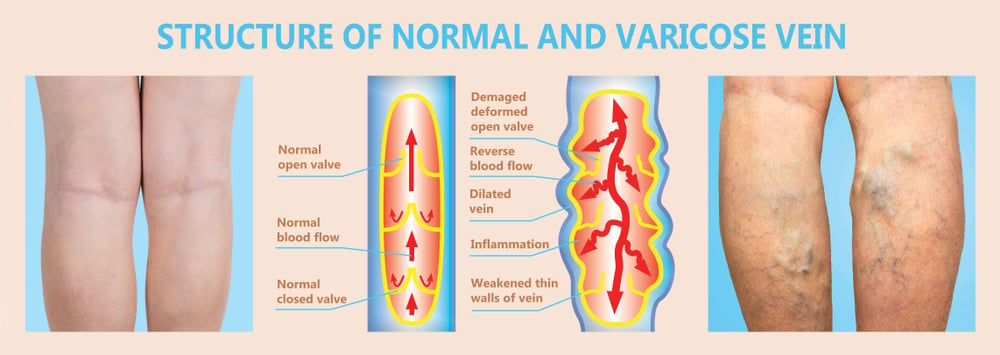The Vein Aging Journey: A Closer Look at the Changes

As our bodies age, the aging process affects various aspects of our health, including our veins. Unlike arterial aging, which may lead to conditions like peripheral arterial disease, vein aging presents a different set of changes. Aging influences our veins, and my goal is to discuss the effect aging has on veins, distinguish it from arterial aging, and dispel any concerns about life-threatening risks.
Vein aging is a natural progression that occurs as we grow older, contributing to various shifts in our circulatory system. Unlike the potentially severe outcomes associated with aging arteries, like the risk of needing major surgery or even the possibility of limb loss or amputation, vein aging is a much more benign process. It is rarely associated with the risk of death or loss of a leg. The primary concern is the increased likelihood of developing vein reflux. Vein reflux is very common and affects two-thirds of individuals in their seventies and eighties.
Understanding the Vein Structure
Veins are essentially tubes that carry blood back to the heart, working against gravity. With time, these tubes undergo a slow but inevitable stretching. Similar to other tissues in our body, the amount of elastin, responsible for elasticity and resilience, decreases as we age. The loss of elastin as people age is the very reason we get saggy skin. This is the same reason our veins walls stretch and the valves loosen.
Vein Distension and Valve Functionality
As the veins stretch and lose resilience, a notable consequence is the stretching of these tubes. Within the veins are tiny valves designed to prevent the backward flow of blood. However, the stretching of veins leads to the separation of these valves, making it challenging for them to effectively impede blood from rushing back down the leg. This process marks the visible signs of vein aging, often manifesting as spider veins or, less commonly, varicose veins.

Symptoms and Visible Veins: Unveiling the Signs
While aging veins may not pose life-threatening risks, they can introduce discomfort and visible changes. Symptoms like swelling, tension, and tenderness in the legs may accompany the aging process. Moreover, the visible appearance of spider veins and, to a lesser extent, varicose veins can be attributed to the stretching and distension of veins.
Reassurance Amid Concerns
A key takeaway is the reassurance that vein aging does not increase the risk of life-threatening conditions such as blood clots, stroke, or heart attack. Unlike aging arteries, where complications can lead to serious consequences, aging veins primarily present as unexplained leg aching, leg pain, and general fatigue. Most of the time, the legs appear normal. It's the veins under the skin that are the problem.
Navigating the Aging Veins: Practical Considerations
As we navigate the journey of vein aging, it's essential to recognize that the development of a vein condition with age is not dangerous but certainly can impede your health and your enjoyment of life. Understanding how aging affects our leg veins can help us understand what is causing some of our leg symptoms, unsightly leg veins, and fatigue with the goal of improving both. This knowledge empowers us to make informed decisions about our overall well-being. By understanding the changes that come with the passage of time and addressing any symptoms that may arise, individuals who wish to improve their vein health can seek evaluation with a vein specialist.



